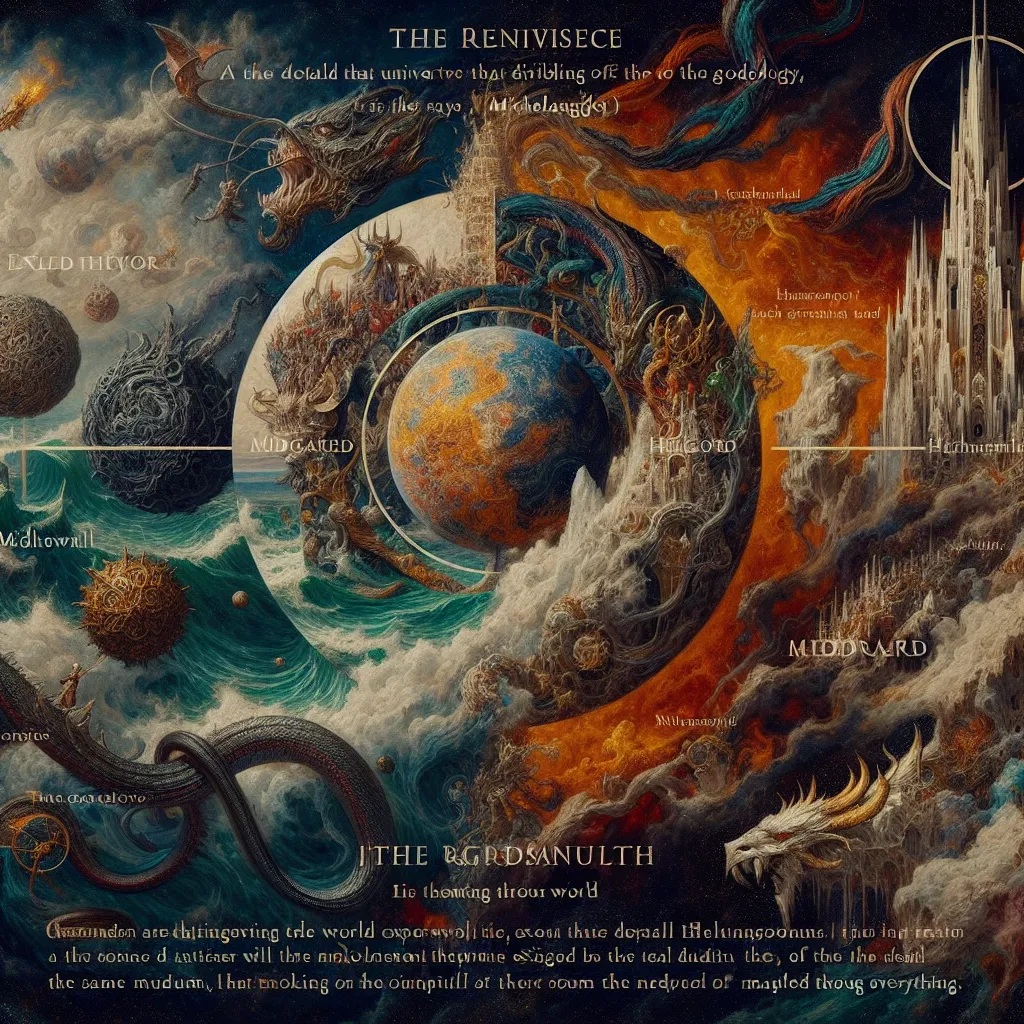
- Published on
- Authors

- Name
- You
Norse Cosmology: The Structure of the Universe and Its Realms
Norse cosmology presents a fascinatingly intricate vision of the universe, presenting a blend of poetic myth and speculative wisdom. Central to this structure is Yggdrasil, the World Tree, which connects nine distinct realms, each with unique characteristics and inhabitants.
Yggdrasil, often described as a colossal ash tree, serves as the axis mundi, the cosmic axis connecting the heavens, earth, and underworld. Its roots and branches extend into various realms, providing a framework not unlike modern understandings of a multidimensional universe.
The Nine Realms
| Realm | Description |
|---|---|
| Asgard | Realm of the Aesir gods, a celestial paradise akin to concepts of heaven. |
| Midgard | The realm of humanity, our earthly plane, positioned at the center of Yggdrasil. |
| Jotunheim | Land of the Giants, a chaotic, untamed wilderness. |
| Vanaheim | Home of the Vanir gods, divine beings associated with fertility and prosperity. |
| Alfheim | Realm of the Light Elves, ethereal beings of light and beauty. |
| Svartalfheim | Home of the Dwarfs, master craftsmen and smiths. |
| Niflheim | A frigid, fog-covered land of ice and mist, representing the primordial void. |
| Muspelheim | Realm of fire, home to fire giants and demons, embodying the concept of destruction. |
| Helheim | Underworld realm of the deceased, governed by the enigmatic Hel. |
Scientific Parallel: Understanding Multiverse Theory
In modern cosmology, the concept of the multiverse—the existence of multiple, perhaps infinite, universes coexisting—mirrors Yggdrasil’s interconnected realms. Each realm within the Norse cosmos could be likened to a separate universe or dimension, part of a larger, interconnected system.
Mystical Elements in Norse Cosmology
The mystical aspect of Yggdrasil is evident in its sustaining life force, drawing sap that nourishes gods and mortals alike. This spiritual essence is akin to the modern scientific search for a "unifying theory" that could explain the fundamental forces binding our universe together.
The Role of Deities
Inhabitants of these realms—including gods, giants, elves, and dwarfs—reflect aspects of existential and moral considerations. For instance, the Aesir gods of Asgard often symbolize order and civilization, while the chaotic giants of Jotunheim represent raw, untamed natural forces.
Table of Deities and Associations
| Deity | Realm | Role/Significance |
|---|---|---|
| Odin | Asgard | Allfather, god of wisdom, poetry, death, divination, and magic. |
| Thor | Asgard | God of thunder, protector of humanity, personifies strength and bravery. |
| Freyja | Vanaheim | Goddess of love, fertility, battle, and death. |
| Loki | Asgard/Helheim | Trickster god, a complex figure embodying chaos and change. |
Conclusion
Norse cosmology not only provides a detailed map of the mythical universe but also encourages a deep reflection on the interconnectedness of all life. As we explore these realms through the lenses of both mysticism and science, we uncover a rich tapestry of narrative and meaning, resonating across cultures and epochs.
In understanding Norse cosmology, we might also gain insights into our own place in the cosmos, appreciating the delicate balance that sustains life and the mysteries that still elude our grasp.
Explore further into Norse mythology and discover the secrets of the ancestral sagas that still echo in our modern consciousness.
